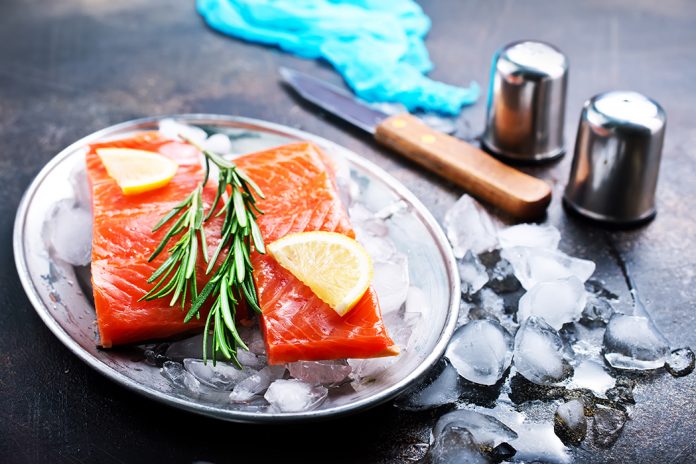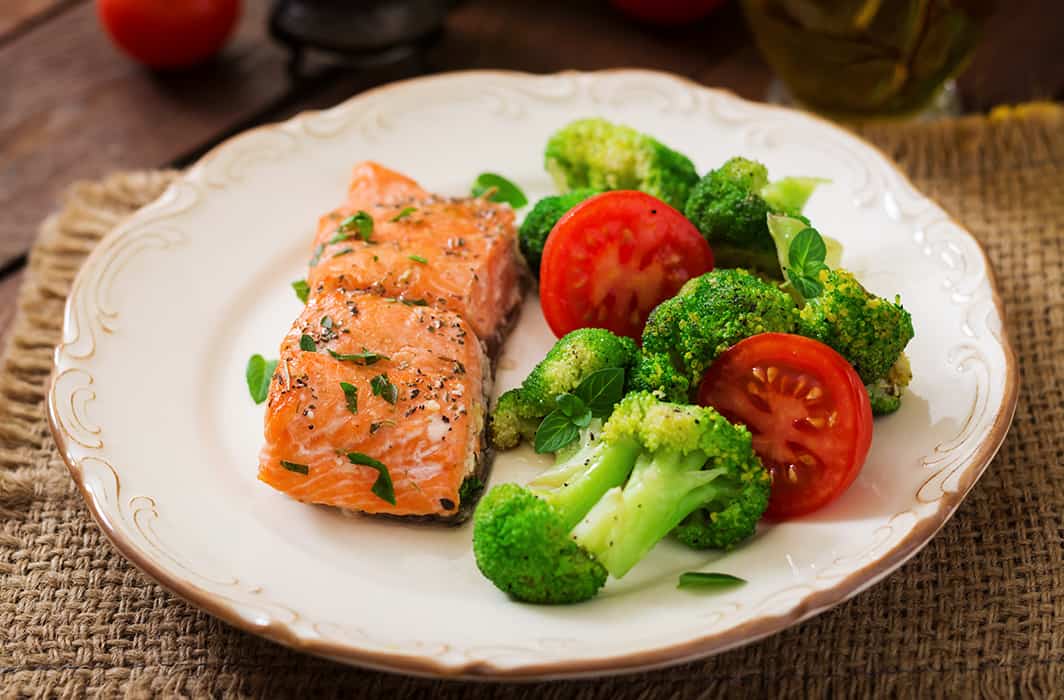
Fish and shellfish have been important in human nutrition since prehistoric times. Fish farming is an age-old practice and the ancient Assyrians and Romans farmed fish in ponds. For thousands of years, the Chinese have farmed fish using their rice fields during the periods when the fields are underwater. Throughout history, fish and shellfish have been a source of economic power. During recent decades, per capita, fish consumption has expanded all over the world.
In addition to eating fresh fish, techniques such as smoking and salting have been used to preserve salmon. To this day, smoked salmon is enjoyed as traditional fare in the cuisines of the Russian Federation, Britain, and Scandinavia.
Varieties of salmon
As with all fish consumption, sustainability is a major issue. However, several varieties of salmon are sustainable, and you can find more information at msc.org. Salmon varieties are usually classified by the ocean in which they are located. In the Pacific, they are considered part of the genus Oncorhynchus, and in the Atlantic, they belong to the genus Salmo. There is only one migratory Atlantic species but five existing species of Pacific salmon: chinook (or king), sockeye (or red), coho (or silver), pink and chum. In the UK, the main source of salmon is from Scotland. Wild Alaskan salmon is also available.

Salmon flesh is typically pink but their color can range from red to orange. The chinook and sockeye varieties are fattier than pink and chum, favorites for steaks and fillets, while coho falls somewhere in the middle. Pink salmon is primarily used for canned food. Chinook salmon are the largest and sockeye the smallest salmon. Due to the various species parameters, cuts and fillet sizes are variable.
Nutritional information
Fish and shellfish are nutrient-dense and salmon is no exception. It is an excellent source of high-quality protein, vitamins, and minerals (including potassium, selenium and vitamin B12) but it is their content of omega-3 fatty acids that receive the most attention, and rightly so. It is this essential fat which is responsible for oily fish’s reputation as a valuable ‘brain food’.

…A note on omega-3 fatty acids
The most beneficial omega-3 fats occur naturally in oily fish in the form of eicosapentaenoic acid (EPA) and docosahexaenoic acid (DHA). These fatty acids are thought to contribute to healthy brain function, the heart, joints, and general wellbeing. The idea that eating fish may reduce the risk of heart disease began in the 1970s and 1980s when it was noted that among the Eskimos in Arctic Greenland (where a high consumption of marine animals was the normal diet), heart disease was very low. In addition to heart disease, scientists are now investigating the role that fish consumption may have in protecting us against some cancers as well as many chronic diseases including Alzheimer’s disease, asthma, depression, diabetes, high blood pressure, macular degeneration, multiple sclerosis, and rheumatoid arthritis.
Omega-3 is termed as an essential fatty acid because the body cannot synthesize it, so it must be obtained from the diet. To optimize your body’s supply of essential fats rich in EPA and DHA, aim to eat oily fish – such as salmon, mackerel, sardines, herring, and fresh tuna regularly. The Department of Health guidelines states that we should aim to eat fish at least twice a week with at least one portion being an oily variety, like salmon. For pregnant and breastfeeding women there is specific guidance. EPA and DHA are important for your baby’s developing the central nervous system, including the brain, so they make a valuable contribution to a healthy balanced diet during pregnancy, but follow do the NHS advice with regards quantities.

Select and store
Salmon can be purchased as either steaks or fillets, fresh, frozen, canned or smoked. Fresh salmon should have smooth, moist skin. If it has been sold whole, its eyes should be bright and clear, not cloudy or sunken. Rely on your sense of smell to tell you if the fish is fresh. If you cannot eat the fresh salmon within a couple of days, it’s best to freeze it. Once frozen and thawed, it should not be refrozen.
Safety
Fish farms now contribute a large amount of salmon being consumed. The wild (free-range) fish are superior in many ways to their farm-raised counterparts. Wild salmon have also been found to have fewer pesticide residues than farmed, however, studies fail to make a strong case that eating farm-raised fish poses a significant safety concern. Smoked salmon is seen as a safe food to eat during pregnancy.
Follow the same food safety rules for salmon as you would with raw meat or poultry. Make sure it is cooked thoroughly by measuring it at its thickest point and cook for 10 minutes per inch. Properly cooked salmon will have firm but moist flesh that will flake apart.
Source: www.bbcgoodfood.com











